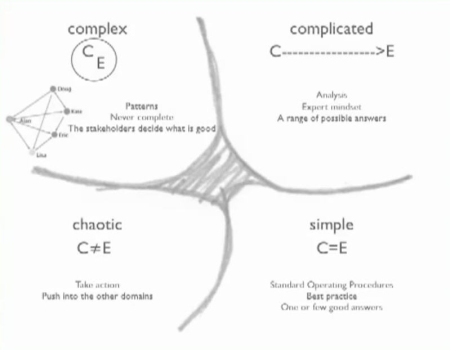
- The Cynefin Framework
As noted in a previous post, the promises made by brands are increasingly judged on whether they converge with the customer experience across channels of service in organizations. The challenge is a longstanding one for all organizations. However, the increasing adoption of social media makes the challenge more pressing as word of mouth (WOM) from customers, suppliers, competitors, or others amplifies their ability to communicate their experience with your brand to others. Word of mouth communities and networks using social software are increasingly spread over regional, national, and international borders, making them much more important to those who market branded products and services, online and off.
Speaking the language of customer-centricity is not good enough. Companies must talk-the talk and walk-the-walk for brand strategy. Brand strategies are most effective when based in the design and delivery of business services themselves. Listening to the conversations people engage online about a topic (such as your brand), and eliciting the participation of those people in the development and refinement of products and services, are two key parts of an experience design strategy. Even though you may think this is a “Duh!” insight, consider recent findings on the engagement gap.
PriceWaterhouseCooper’s 12th Annual CEO Survey recently reported that most CEOs,
…believe that data about their customers (94%), brand (91%) and employees (88%) are important or critical to long-term decision-making. However, strikingly low percentages of CEOs say they have comprehensive information in these and other critical areas that contribute to organisational agility. Just 21% have comprehensive information about the needs and references of customers and clients. Less than one third feel they have all the information they need about reputation (31%) and the views and needs of employees (30%).
Not surprisingly, the ability to anticipate customer needs is the widest gap between the information CEOs report they need to make decisions about the long-term success of their businesses, and what they currently possess. This post explores the Cynefin (pronounced cunevin) Framework as a helpful approach for thinking about the importance of dialogue with customers in efforts to bridge insight and action.
Social Media and the Cynefin Framework
The challenges faced by experience design largely result from the fact that engaging customers through social media is a process of dialogue, not simply using conversation to collaborate. Collaboration is not only about goals and reaching explicit agreement through conversation, though these are obviously important. As noted here earlier, it is also important to look at customer experience and product/service innovation from the point of view of dialogue, where different parties develop a mutual understanding of how the value of social media content relates to them.
The increasing maturity and diffusion of social media … makes it clear that a dialogue strategy provides a coherent framework for communications, whether addressing collaboration, innovation, marketing, sales, support, or branding. The key to the process is understanding customers, attracting them, engaging them, and learning from them to improve products and services
Though I read Snowden and Poole’s article, “The New Dynamics of Strategy: Sensemaking in a Complex and Complicated World”, on the Cynefin Framework several years back, I was reminded of it again a few days ago after finding the presentation from Anecdote that you can view just below. In addition, I ran across John Caddell’s discussion of Joseph Hall and Eric Johnson’s article in the March 2009 Harvard Business Review, “When Should A Process Be Art, Not Science?”. Call me thick-headed, but the two in combination caused me to reconsider how to think about the recurring issue of assessing the business value of social media.
The Cynefin Framework distinguishes four domains of knowledge:
- simple
- complicated
- complex
- choatic
Play the video below for a quick overview of the Cynefin Framework.
The business value of social media comes from the unique patterns of experience that emerge in the dialogue that takes place in human activities occurring in the complex domain. Regardless of how hard we try, answers to the questions we can formulate about relationships in this domain of knowledge remain indeterminate, unlike questions formulated about relationships in the complicated domain where cause and effect remain, in principle, connected. In my opinion, much of the debate about ROI in social media fails to recognize this fundamental distinction.
However, as John Caddell nicely puts it,
it’s time to find useful, actionable patterns out of those gigabytes of chatter–Tweets, blog posts, comments–you’ve collected about your products, company, customer service from all these sources.
Data gathered by listening platforms provides a unique sample of conversations about products and services. Engaging in a dialogue with the authors of those conversations, and immersing a multi-channel design team in an analysis of how customers evaluate the brand promises as conveyed in the stories they tell, is a promising approach to crossing the divide between listening and acting.
Posted by Larry R. Irons
Share this post…












